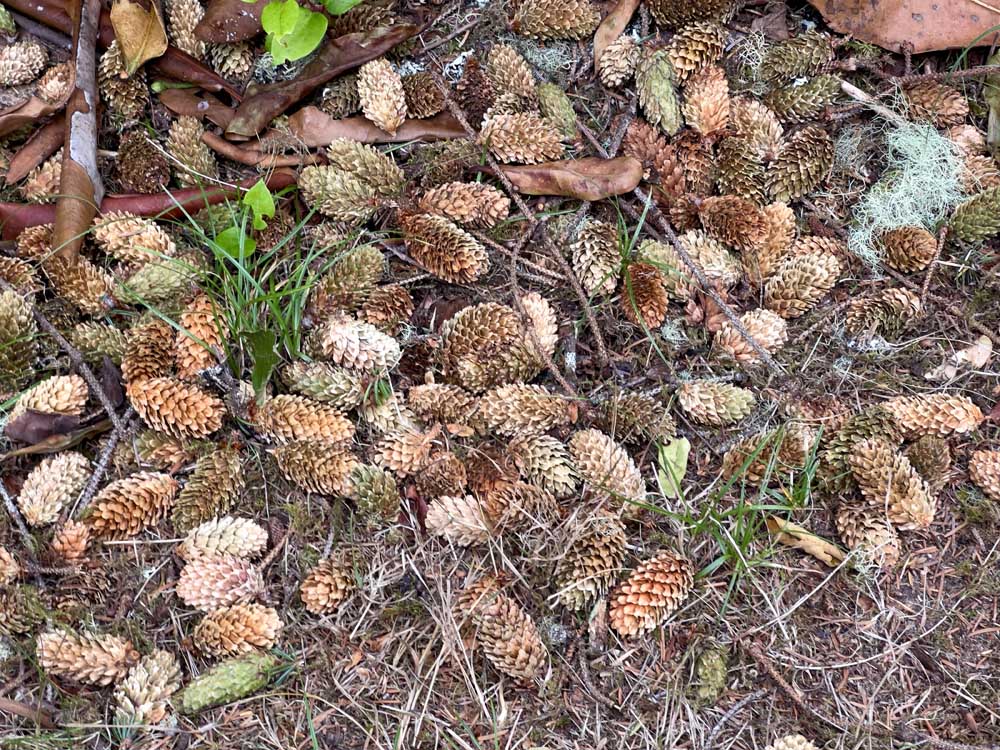Birding: Keep an eye open for ‘odds and sods’
Published 12:16 pm Wednesday, August 30, 2023

- This is the work of the red crossbills with the help of a Douglas squirrel or two.
Have you noticed an influx of some species recently? Red-breasted Nuthatches are here in large numbers now.
Trending
Some readers have let me know that they too are seeing large numbers of nuthatches. Red crossbills are taking advantage of the huge crops of cones produced by spruce and pine trees this year. If you hear a lot of twittering above pine or spruce trees it is likely to be the crossbills. They are here in droves. Today, eight were drinking out of the bird bath. When their thirst was quenched, they all flew off back up into the spruce trees, but lo and behold another group of about eight fluttered down to take their turn at the water bar! This behavior has been ongoing now for several weeks.
Everywhere I hike or walk these days if there are spruce or pine trees there have been red crossbills. These are the birds with the crossed bills for prying out seeds in cones. They are a nomadic species. They are constantly on the move to where the food is. Crossley’s (2021) writings supports the idea of coming to the bird bath for drinks. He says they “drink a lot.” The other day I was standing in the yard when I was bombarded by cones. Between the red crossbills and the Douglas squirrels it was raining cones! If you experience this or see it in action from your windows, be sure to look up. You just might see a red crossbill hanging parrot-like above you.
American crows seem to be gathering. I am seeing many large flocks on the edge of Willapa Bay. The barn and cliff swallows are gathering now as well. They will be on the move soon. They sit along the edge of the roofs of large buildings sunning themselves after catching insects on the wing. After a short rest, off they go again to enjoy more of the tasty airborne insects.
Trending
As mentioned last week, great blue herons are dispersing. There are quite a few in Willapa Bay stalking prey. They are staying their distance from one another. Willapa Bay is a magnet for the Osprey too. One has been hovering and diving for fish for the past few weeks and is still at it. There must be good pickin’s in the bay. Shorebirds are still few and far between. Semipalmated plover have been the most often seen on the bay’s mudflats this past week. A few killdeer have also made an appearance.
The feeders are still going strong. About ten American goldfinch are hogging one. When they decide they have had enough for a while the red-breasted nuthatches, black-capped and chestnut backed chickadees move in. They grab and run, eat, and return for more delicious black oil seeds. Perhaps they are also storing a few for the winter months. These species also love to use the bird baths for bathing and drinking.
Flocks of American robins can be seen in yards, in trees and fields. They too are gathering for the trek south for the winter. Some will stay with us, but many will leave until they are ready to return in the spring. Song sparrows, dark-eyed juncos, and purple finch abound.
It will be interesting to see what effect climate change and the fires and smoke will have on our bird populations. Maybe more will stay instead of leaving if the weather remains hot and more fires materialize. After all, the Long Beach Peninsula is the perfect place now and always. I know it and I’ll bet the birds know it too! Happy birding!









